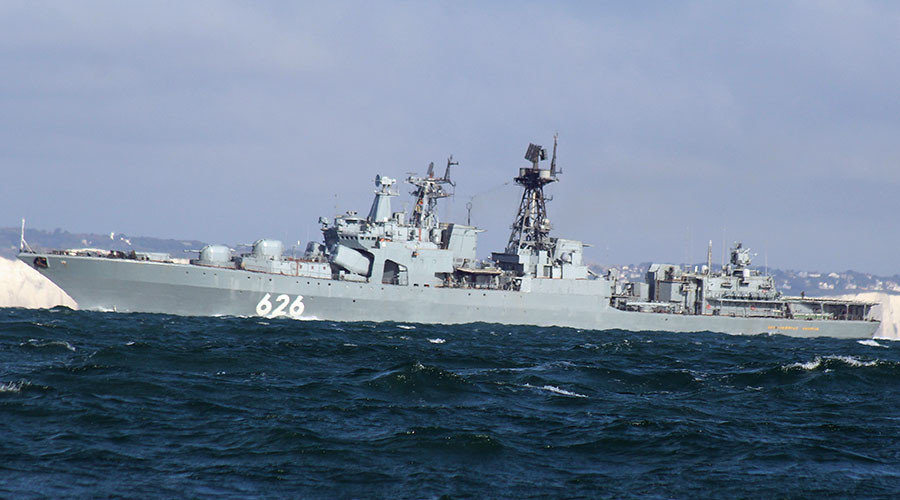
© Dover-Marina.com / SputnikThe anti-submarine warfare (ASW) ship Vice Admiral Kulakov
A Russian naval group in the Mediterranean spotted and chased away a Dutch submarine, which approached the ships to monitor their activities, the Russian Ministry of Defense announced. Moscow criticized Holland's "awkward" actions.
On Wednesday, the Russian "naval search-and-assault group of large anti-submarine vessels, 'Severomorsk' and 'Vice-Admiral Kulakov,' spotted the diesel-electric submarine (presumably 'Walrus') of the Netherlands' Navy, [which] tried to approach the carrier battle group of the Northern Fleet for monitoring," the Russian Ministry of Defense said.The Dutch vessel was "easily" spotted some 20 kilometers away from the Russian naval group."[Russian] ships were tracking [the Dutch submarine's] maneuvers and forced it to leave the area of the carrier group," the statement by the MoD said.
Moscow has also warned that "awkward attempts to dangerously maneuver in close proximity to the Russian naval group" by the Dutch Navy could lead to "serious navigation accidents."
The Russian naval group also practiced its anti-submarine defense capabilities after spotting the Dutch vessel.
"Anti-submarine forces of the Russian Navy battle group have conducted a training exercise on the organization of anti-submarine defense."
Moscow also noted that it is not the first time Russian vessels were shadowed by NATO military during the mission.
"The carrier group of the [Russian] Northern fleet has regularly spotted NATO submarines on its path during the whole trip," the Russian Defense Ministry announced.It added that earlier in November, a nuclear 'Virginia [class]' submarine tried to "track" the Russian military ships.
"It is worth noting that having a large tonnage, vessels of this class are not designed to conduct surveillance operations."
The Russian MoD noted that all "attempts" by foreign states to approach the vessels are "monitored in real time, which is a normal maritime practice."
Russian warships, including the aircraft carrier Admiral Kuznetsov, the Pyotr Veliky battle cruiser, and the Severomorsk and Vice-Admiral Kulakov anti-submarine warfare destroyers, were sent to the Mediterranean on October 15.
The departure created quite a media buzz, with NATO countries, including the UK, sending warships to "mark" the Russian naval group.
Moscow, however, stressed that ships were dispatched to "ensure a naval presence in operationally significant areas of the world's oceans," including to secure maritime navigation.
In Russian Federation
U-boats are still Bad Things
Looks like Dutch Treat Got "Das Boot" Checked via Eurasia of Human Beings.
Trained Dolphins Do Better BTW